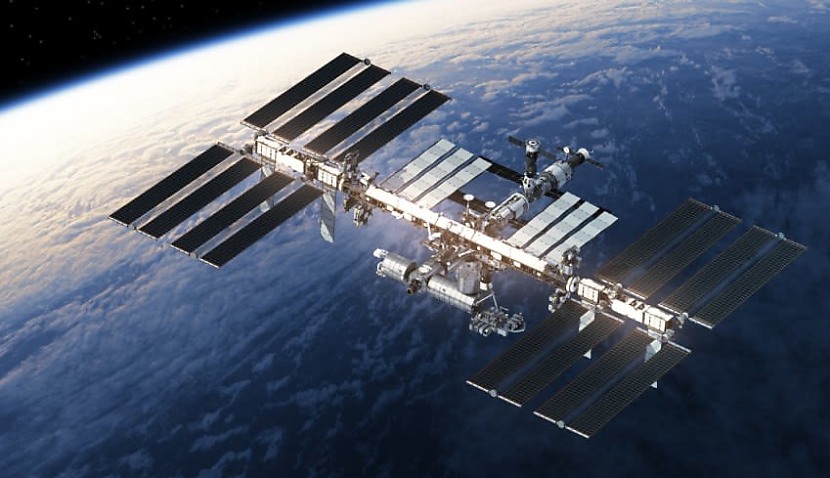
The aerospace giant made the comments after all nine onboard the space laboratory were last week forced to take shelter in their docked spacecrafts to avoid the fallout from a nearby satellite break-up.
NASA previously revealed the “precautionary measure” lasted around an hour before the astronauts were allowed to resume normal work.
Those onboard included Starliner astronauts Barry “Butch” Wilmore and Sunita “Suni” Williams, who have had their stay extended indefinitely.
“Shortly after 9pm EDT, NASA instructed all astronauts to seek shelter in their respective spacecraft,” said Boeing.
“Wilmore and Williams activated their Safe Haven procedures, sheltered inside Starliner, and began preparations for a possible undocking from station if it became necessary. They closed the hatch before the closest debris approach, which passed without issue.
“Mission Control monitored the path of debris and after about an hour the crew was cleared to exit their spacecraft and resume station operations – which in this case was sleep. Starliner was out of docked quiescent mode for about three hours.
“Wilmore and Williams performed two prior Safe Haven exercises inside Starliner, as part of the CFT test objectives. However, the additional metrics gathered Wednesday evening will benefit Starliner’s certification process and sharpen the experience for future crews.”
It comes as NASA continues to insist Starliner astronauts are “not stranded” on the ISS, despite repeatedly delaying their return as they examine thruster and helium leak problems encountered after launch.
“Our goal is to bring Butch and Suni home aboard Boeing’s spacecraft, and we are working to confirm Starliner will perform as designed to return them safely to Earth,” said Ken Bowersox, a NASA associate administrator.
“Space station gives us the luxury of time, allowing us to look at data we gathered on the way uphill and conduct some additional testing.
“We’re still in the middle of a test mission, and we want to spend more time with the data before we make the final call to put the crew aboard the spacecraft for return.”
NASA added it would conduct additional ground testing to better understand the spacecraft’s thruster performance.
The test will expose the thrusters to “flight-like pulse counts and thermal conditions” for ground teams to analyse.
“We spent a lot of time working to determine whether we could get meaningful data from a ground hot fire to better inform our decision making in flight, and I am extremely proud of our integrated NASA and Boeing teams for coming up with some innovative options and leveraging testing plans that were already in place for future missions,” said Steve Stich, manager of NASA’s Commercial Crew Program.
“Based on the continued performance of Starliner while docked, we are working with station to extend the certification of several components beyond a 45-day mission duration, if needed, so our engineering teams can take the time they need while Butch and Suni support various in-orbit activities that are critical for sustaining station operations and research.”
Starliner finally blasted off to the ISS last month on its historic first crewed mission after a series of delays.
The current mission is the final test flight before NASA certifies the vehicle for regular operational missions starting as soon as next year.
Starliner was initially due to blast off to the ISS earlier last month, but the first attempt was scrubbed at the last minute because of a faulty valve on the rocket’s Centaur upper stage.
A subsequent try on 17 May was also repeatedly delayed, this time due to a helium issue. Finally, a third problem was found to be linked to a flange in a thruster in the spacecraft’s service module.
May’s scrubbed launches are the latest in years of issues for Starliner, which Boeing hopes will be able to regularly send US astronauts into space much like SpaceX’s Dragon capsule.
Starliner’s first attempt at a flight without humans onboard failed in 2019 due to software glitches, but it eventually docked with the ISS in May 2022.

Adam Thorn
Adam is a journalist who has worked for more than 40 prestigious media brands in the UK and Australia. Since 2005, his varied career has included stints as a reporter, copy editor, feature writer and editor for publications as diverse as Fleet Street newspaper The Sunday Times, fashion bible Jones, media and marketing website Mumbrella as well as lifestyle magazines such as GQ, Woman’s Weekly, Men’s Health and Loaded. He joined Momentum Media in early 2020 and currently writes for Australian Aviation and World of Aviation.
Receive the latest developments and updates on Australia’s space industry direct to your inbox. Subscribe today to Space Connect here.









